15 Facts About The Longest-Living Shark On Earth

Greenland sharks are fascinating creatures residing in the icy waters of the northern Atlantic Ocean.
Known for their incredible longevity and unique adaptations, these sharks are unlike any other species. Their mysterious nature and elusive presence have intrigued scientists and ocean enthusiasts alike.
1. Ancient Longevity
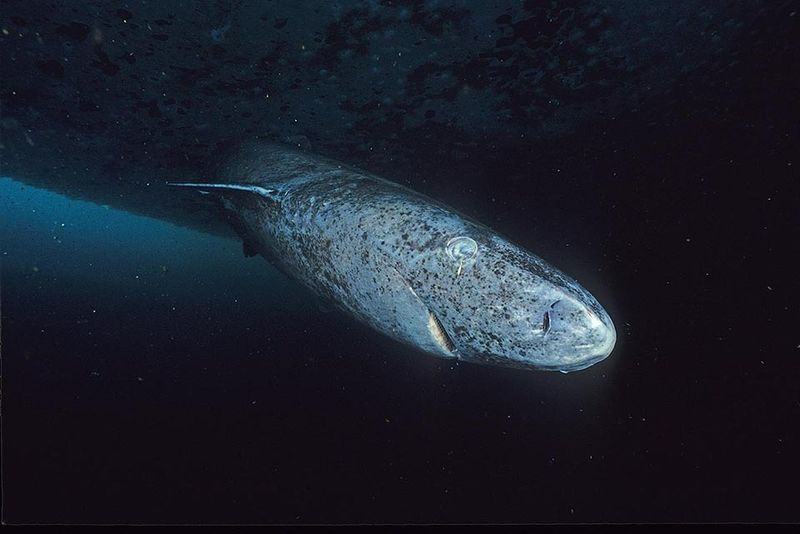
Imagine a creature that has swum through the oceans since medieval times. Greenland sharks can live over 500 years, making them the longest-living vertebrates on Earth. Their slow growth rate and late maturity are key to their longevity.
These sharks continue to grow throughout their life, reaching lengths of up to 24 feet. Incredibly, a Greenland shark born today might still be swimming when your great-great-great-grandchildren are born.
2. Slow Swimmers
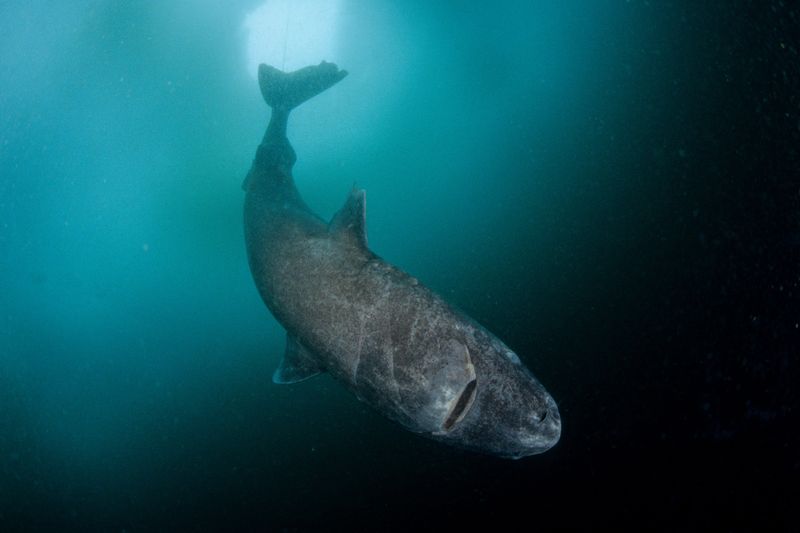
If you think tortoises are slow, meet the Greenland shark. These sharks barely exceed speeds of 1.7 mph, earning them the title of the slowest-swimming shark.
Their sluggish pace is perfectly adapted to their cold, deep-sea environment. Slow swimming helps them conserve energy in the frigid waters of the Arctic.
3. Deep Divers
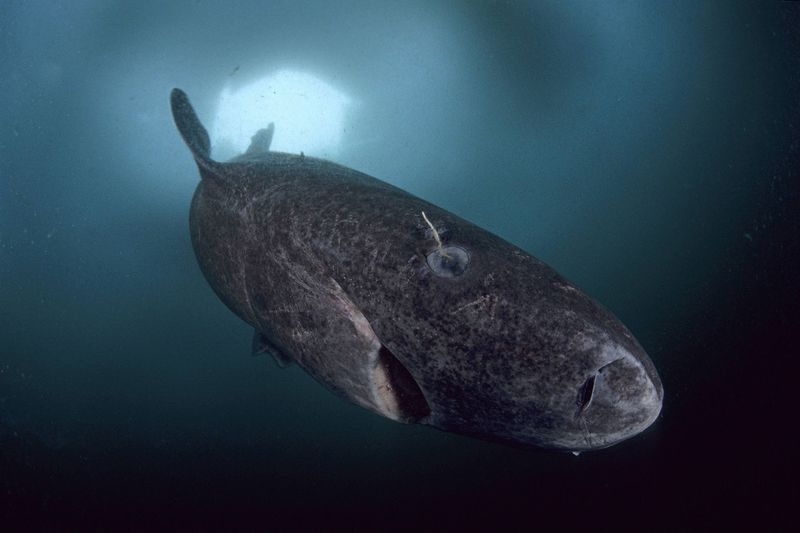
Diving deep is no challenge for the Greenland shark. They are found at depths of up to 7,200 feet, deep within the icy waters of the North Atlantic and Arctic Oceans.
This ability to dive deep allows them to explore areas where few other predators can reach. Their eyes have evolved to withstand the pressure and darkness of the deep sea.
4. Unique Diet
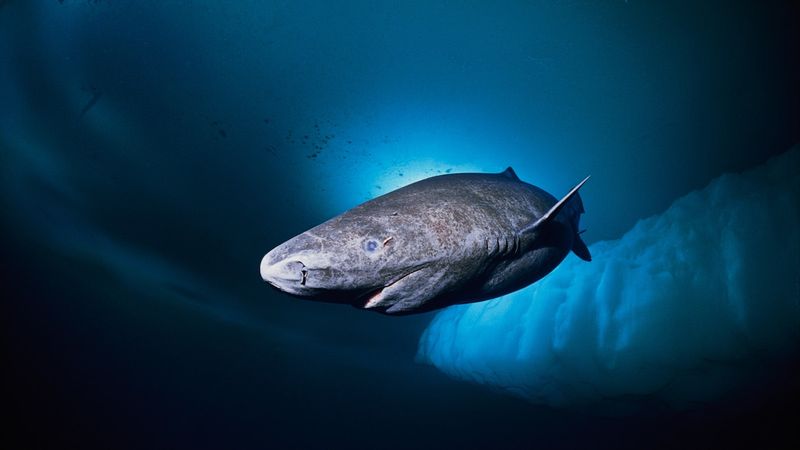
Greenland sharks have a taste for the unusual. Their diet includes fish, seals, and even carrion, like polar bear carcasses. They’ve been known to eat land animals that accidentally enter the water or get trapped on ice.
The shark’s slow metabolism allows it to go months between meals, conserving energy for when food is scarce.
5. Mystery Eyes
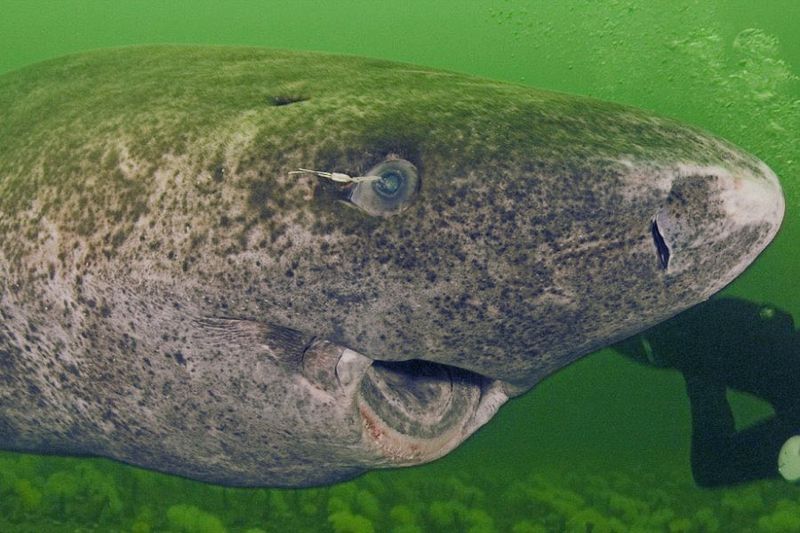
Take a closer look at the Greenland shark’s eyes, and you’ll find a mystery. Many have parasitic copepods attached, which might impair their vision.
These parasites form a symbiotic relationship, possibly aiding in camouflage. Despite this, they can still detect light and movement, essential for hunting.
6. Toxic Flesh
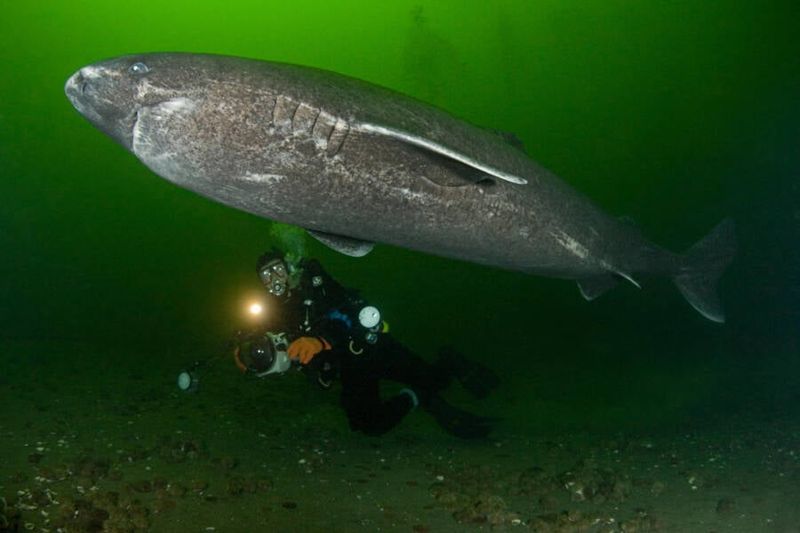
Don’t be tempted to take a bite out of a Greenland shark. Their flesh is highly toxic due to high levels of trimethylamine oxide (TMAO).
Consuming it can lead to intoxication, similar to extreme drunkenness. However, indigenous people in Greenland have learned to ferment the meat, neutralizing the toxins.
7. Elusive Reproduction
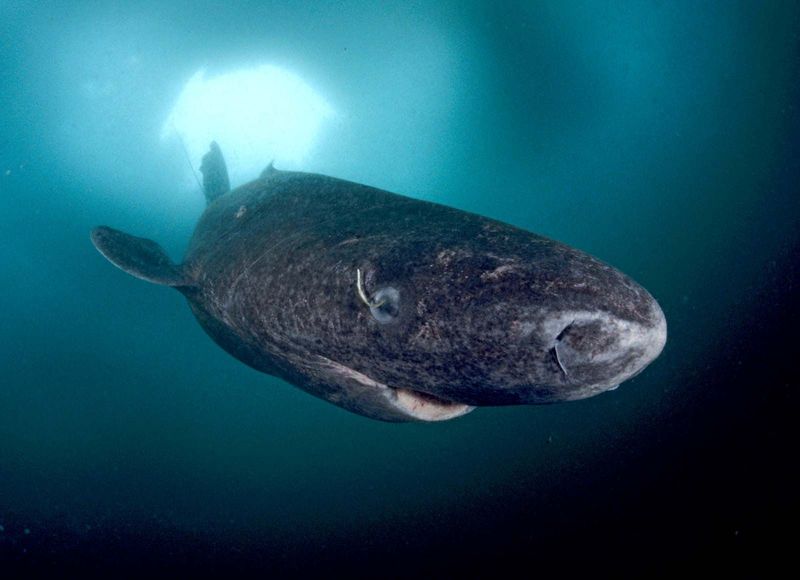
The reproduction of Greenland sharks is shrouded in mystery. Females give birth to live young, but much about their mating rituals and gestation period remains unknown.
They give birth to around 10 pups at a time, after a long gestation period. This elusive reproduction process is a key reason why studying these sharks is so challenging.
8. Cultural Significance
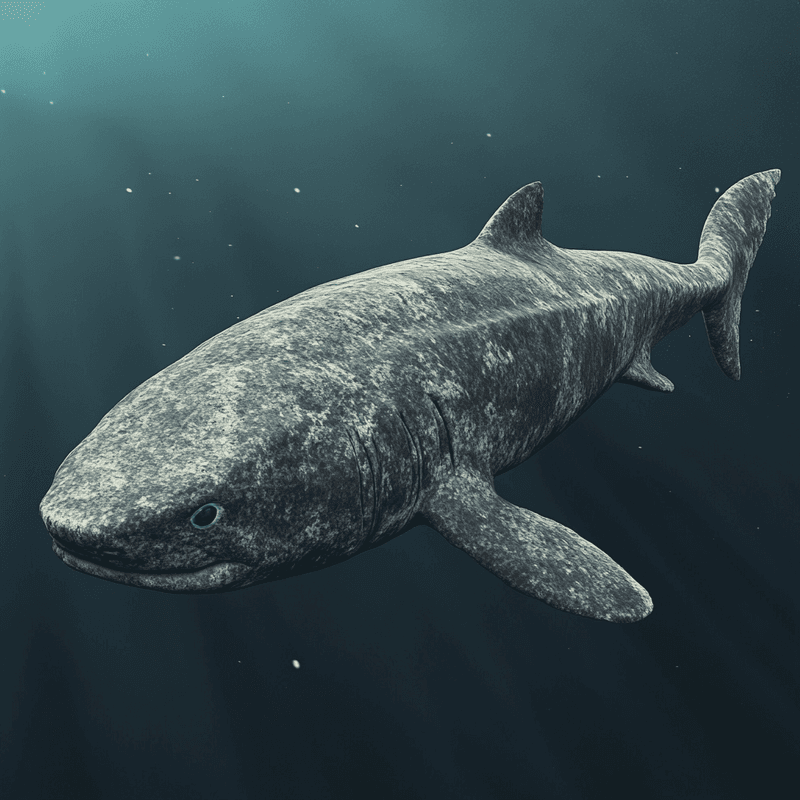
In the Arctic regions, the Greenland shark holds cultural significance. Indigenous communities have long relied on the shark for food and materials.
The fermented shark meat, known as ‘kæstur hákarl,’ is a traditional dish in Iceland. This cultural connection demonstrates the shark’s importance beyond its ecological role.
9. Temperature Tolerance
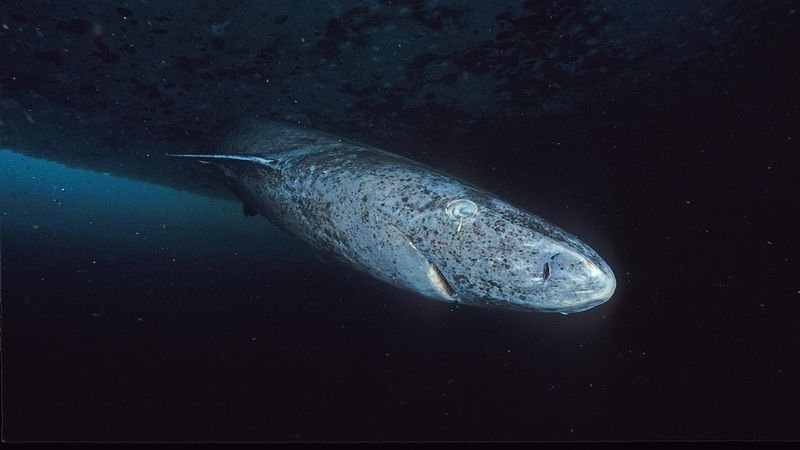
Greenland sharks are masters of cold tolerance. They thrive in waters as cold as 28°F, thanks to an antifreeze-like compound in their bodies.
This adaptation allows them to inhabit some of the coldest oceanic waters. Their thick skin and slow metabolism also help them survive in such frigid conditions.
10. Silent Hunters
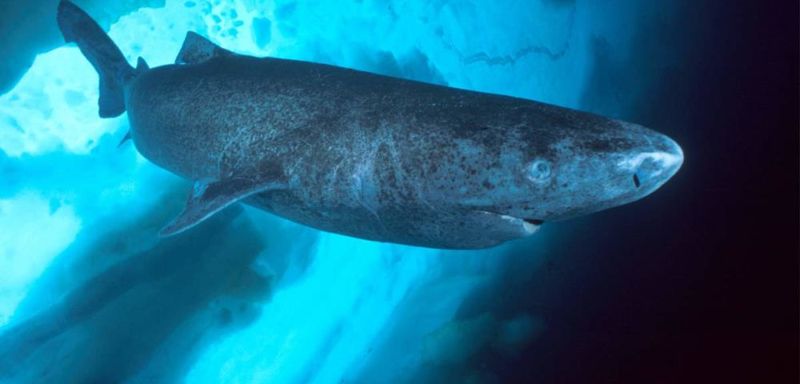
Silence is key for the Greenland shark. These sharks are stealthy predators, relying on the element of surprise to capture prey.
Their slow approach and ability to navigate the dark, cold waters make them effective hunters. This hunting method is crucial in the competitive and resource-scarce Arctic environment.
11. Scavenger Lifestyle
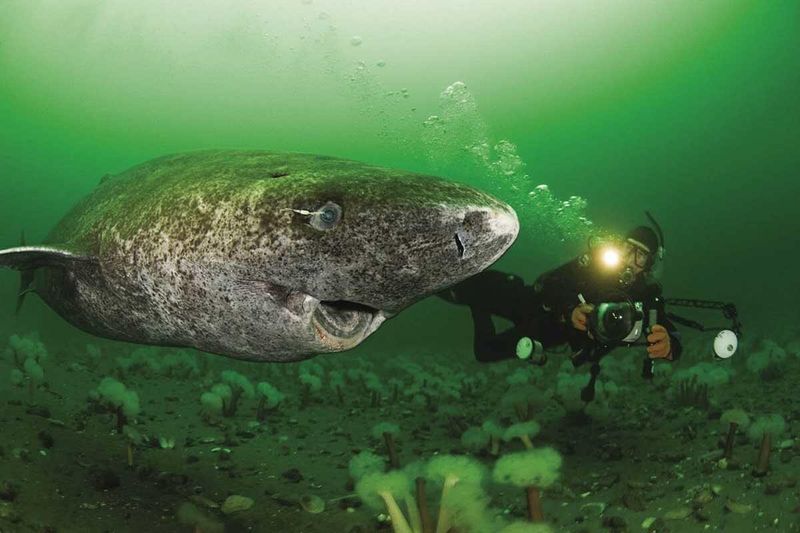
Scavenging is an essential part of the Greenland shark’s lifestyle. They often feed on carrion, like dead marine mammals and fish.
This opportunistic feeding habit ensures their survival in sparse environments. Scavenging also plays a vital role in the Arctic ecosystem, aiding in nutrient recycling.
12. Ancient Relatives
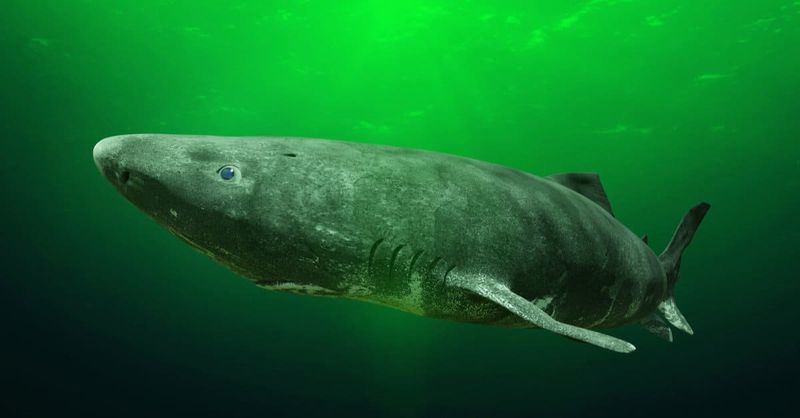
The Greenland shark belongs to an ancient lineage. Their ancestors roamed the seas during the time of the dinosaurs.
This evolutionary heritage is evident in their primitive features, linking them to ancient sharks. Despite their ancient origins, they remain well-adapted to modern marine environments.
13. Rarely Seen
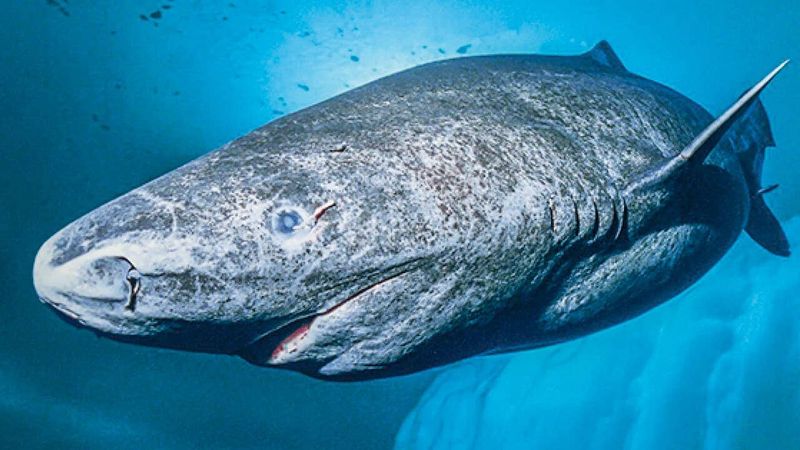
Spotting a Greenland shark is a rare event. Their elusive nature and deep-sea habitat make them infrequent visitors to the surface.
This rarity adds to their intrigue, as scientists strive to learn more about them. Occasionally, they appear in shallower waters, offering brief glimpses of their majestic presence.
14. Remarkable Size
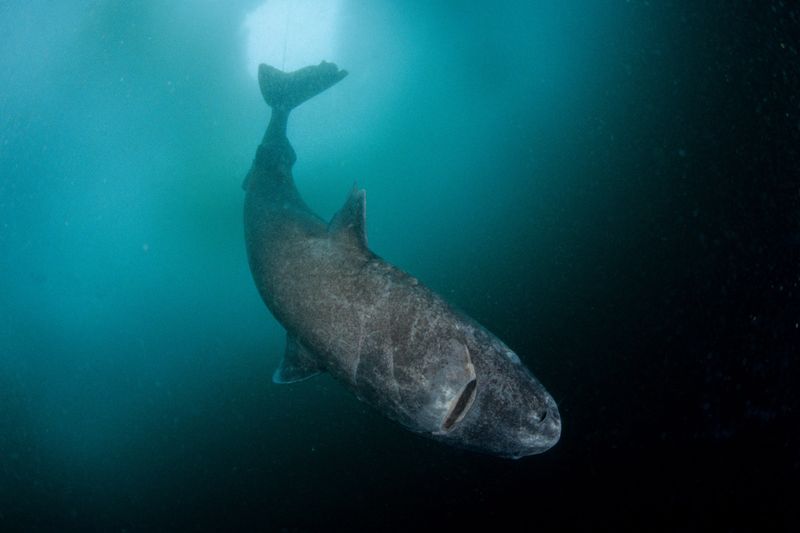
The Greenland shark is a giant of the deep. They can grow up to 24 feet long, rivaling the size of great white sharks.
This impressive size is achieved over centuries, as they grow slowly throughout their life. Their massive bodies are well-suited to cold, deep waters, where they remain elusive giants.
15. Natural Predators
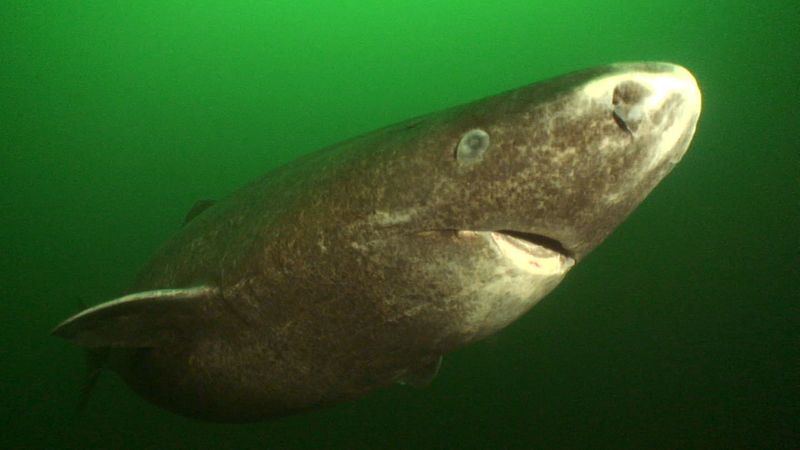
Few animals dare to challenge the Greenland shark. However, they have a natural predator: the orca.
These intelligent marine mammals occasionally prey on Greenland sharks, showcasing a rare predator-prey relationship.
The orca’s strength and teamwork enable them to hunt these elusive giants.






